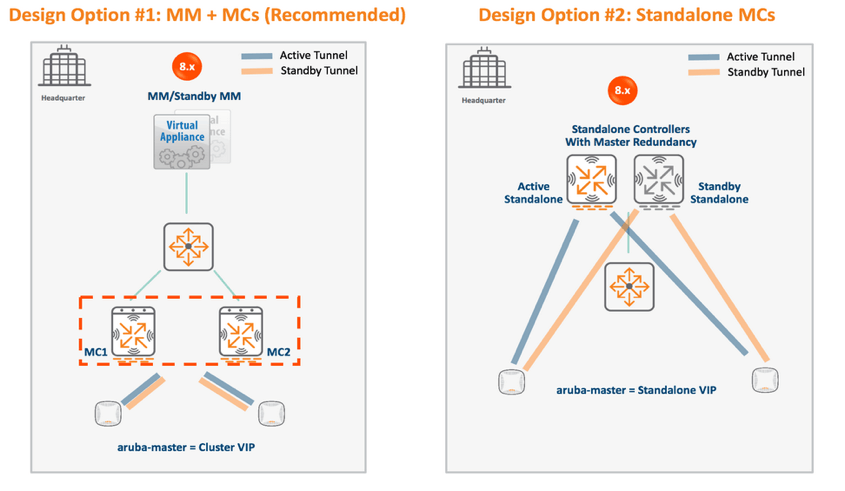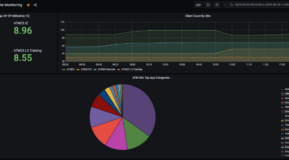With the release of ArubaOS 8.2.1 now available for download, the migration process placed top of mind for many engineers at Atmosphere 2018. ArubaOS 8 brings with it not only snazzy new features and support for the latest and greatest access points, but also a change in architecture that streamlines centralized configuration and management and sets the stage for increased scalability. The Tech Field Day delegates sat down with fabulous Aruba expert Jerrod Howard to get the inside scoop on how best to prepare and execute a smooth migration.
ArubaOS 8 introduces a Mobility Conductor, an architectural element that moves to the top of the hierarchy, taking on traditional controller roles such as licensing and AirMatch (formerly ARM). The Mobility Conductor, which does not terminate APs, also provides new services, such as MultiZone (which can be used to support multi-tenancy), Live Upgrade (rolling upgrades for 24/7 uptime), Dynamic Segmentation (extending wireless policies to wired), and controller clustering (enhanced redundancy).
With the Mobility Conductor architecture, behaviors for management, control, and forwarding services become strongly separated, giving you the ability to do nifty things like run different versions of code on various controllers in your environment. Controllers can be upgraded to 8.x without a MM, but many of the new features will not be available. Also, note that Mobility Conductor or controller managing other Mobility Controllers will not be able to terminate APs in 8.x. Please see the ArubaOS 8 datasheet and this helpful community post for more details on features and AP termination.
Given the architectural changes, the migration process lends itself to a staged approach, standing up a Mobility Conductor first, systematically mimicking the necessary configurations, and lastly converting and joining controllers to the new MM. While there is a migration tool, complex environments and those desiring to do some cleanup work in their controller environment will likely prefer to install the Mobility Conductor and manually migrate configuration elements.
If you plan to use the migration tool, be aware that the tool also has limitations on what elements can be automagically ported to the Mobility Conductor, and some amount of manual configuration will be required for every migration. The migration tool is an OVA that you deploy and the guide can be found in the 8.2.0.0 documentation folder.
Aruba has also provided an excellent getting started tool over on the Aruba Solution Exchange site. Just enter information about your current topology, and the tool gives you an overview and diagrams of 8.x topology recommendations, as well as an overview of caveats and the migration process to help plan your upgrade, as well as links to the migration guide and release notes.

Figure 1 - Sample of design options presented from Aruba Solution Exchange migration planning tool for a Conductor-Standby upgrade
As you continue through the planning process, I highly recommend checking out this series from the Aruba Mobile First Event for more excellent information on all the many enhancements ArubaOS 8 brings to the table.
- ArubaOS 8 New Features by Scott McDermott
- Aruba Brings Campus Wireless Improvements by Rowell Dionicio
- Aruba's Mobile First Vision: Much More Than Connecting Devices by Joshua Williams
- Aruba ClearPass and Managing Unknown Devices Richard McIntosh
- ArubaOS 8 – Behind the Release Notes by Ryan Adzima




